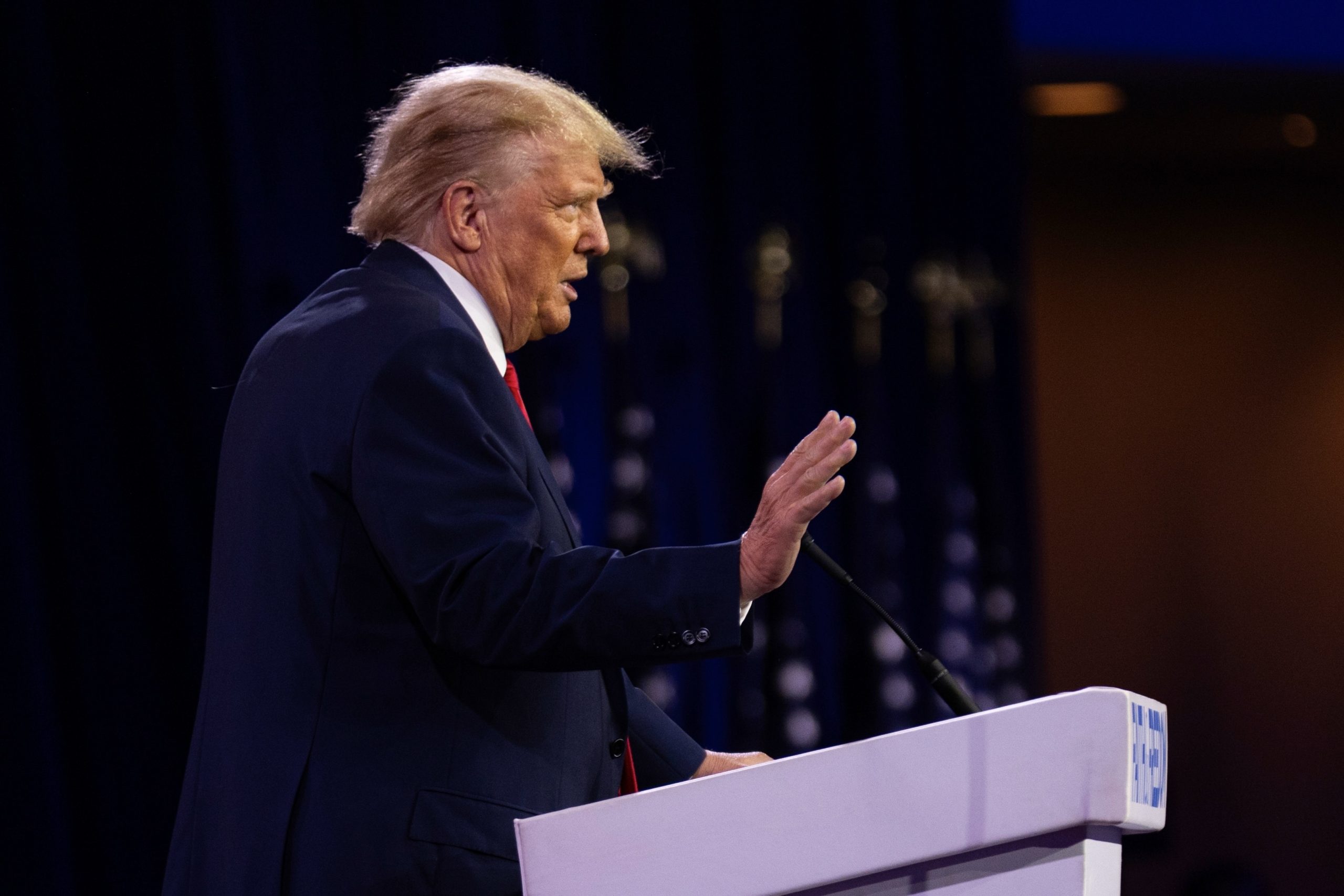The status of Trump’s RIFs


Since taking office in January, one of President Donald Trump’s priorities has been restructuring the federal workforce, including by significantly reducing the number of federal employees. In three separate challenges to the Trump administration’s reductions in force, the Supreme Court – on its emergency docket – has blocked rulings by federal judges that required the government to reinstate removed employees or barred it from carrying out firings.
After the Supreme Court issued its rulings, the three cases returned to the lower courts, where litigation continues. In at least two of the cases, although the proceedings were still in a preliminary stage, the government carried out its reductions in force after the Supreme Court’s orders.
OPM v. AFGE
In Office of Personnel Management v. American Federation of Government Employees, the Supreme Court agreed to block an order by a federal judge in San Francisco that required the government to reinstate more than 16,000 newly hired employees fired from six agencies (the Departments of Veterans Affairs, Agriculture, Defense, Energy, the Interior, and the Treasury).
The lawsuit was filed in February by a group of challengers that included nonprofits, government-employee unions, and local governments. They contended that the “radical transformation” of the federal workforce that Trump seeks to implement through these reductions in force exceeds his powers under the Constitution. Moreover, they contended, the Office of Personnel Management did not have the power to order other agencies to carry out large-scale reductions in force.
Senior U.S. District Judge William Alsup agreed, issuing a preliminary injunction in mid-March that directed the agencies to immediately bring back the 16,000 probationary employees who were fired – that is, employees who have been newly hired for a job, normally within the past year.
The Trump administration came to the Supreme Court on March 24, asking the justices to put Alsup’s order on hold. The court granted that request on April 8. It explained that the nonprofits in the case did not have a legal right to sue (known as standing) to challenge the firings, and noted that Alsup had concluded that he likely did not have the power to hear the claims by the government-employee unions.
On April 18, Alsup ruled that the government-employee unions do have a legal right to sue to seek temporary relief. He issued a second preliminary injunction that barred OPM from directing other federal agencies to fire any federal employees or groups of employees, prohibited agencies from using the form letter that OPM had provided for them to use in firing people, and required agencies to provide employees who had been fired using a form letter created by OPM with a letter stating that they had not been fired because of their performance.
Alsup explained that “[t]here is much less need now for an order reinstating probationary employees than there was in March — when the district court did order reinstatement.” This is particularly true, he noted, because OPM had “re-circulated a revised version of the January 20 memo, which” made clear that agencies, rather than OPM, “have ultimate decision-making authority over, and have responsibility for, such personnel actions.” “So, if any reinstated employees are now terminated (yet again),” Alsup concluded, “it will be because the agency has made the decision to do so, not because OPM directed it.”
The Trump administration appealed Alsup’s second preliminary injunction to the court of appeals, which on Aug. 19 heard oral arguments on both preliminary injunctions.
Trump v. AFGE
In Trump v. American Federation of Government Employees, the court temporarily paused an order by a federal judge in San Francisco that barred the Trump administration from implementing an executive order calling for mass reductions in the federal workforce at 22 agencies.
Senior U.S. District Judge Susan Illston had issued a preliminary injunction on May 22 that prohibited the government from going forward with any reductions in force and required it to provide the challengers – a group of unions, nonprofits, and local governments – with documents related to the RIFs. Eight days later, the U.S. Court of Appeals for the 9th Circuit denied an emergency request from the Trump administration to stay Illston’s order.
But on July 8, the Supreme Court put Illston’s order on hold, with only Justice Ketanji Brown Jackson dissenting. In her view, Illston’s order was simply a “temporary, practical, harm-reducing preservation of the status quo” that was nevertheless “no match for this Court’s demonstrated enthusiasm for greenlighting this President’s legally dubious actions in an emergency posture.”
Justice Sonia Sotomayor filed a concurring opinion in which she emphasized that the court had not weighed in on whether any specific RIF plan violates the law. Instead, she stressed, Illston could “consider those questions in the first instance.”
On July 14, the Trump administration told Illston that the Supreme Court’s July 8 order “effectively ends this case,” and that it planned to file a motion to dismiss (which it did one week later). “The plain import of the Supreme Court’s decision,” the government wrote, “is that Plaintiffs must await specific RIFs from particular agencies and then bring challenges to those RIFs (if they can establish jurisdiction and identify a viable cause of action).”
In an order on July 18, Illston rejected the government’s suggestion that the case was over in light of the Supreme Court’s order. Illston required the government to provide the challengers with agency RIF and reorganization plans, but allowed it to do so confidentially, and she instructed the Trump administration to file a list of the 40 RIFs at 17 agencies that, according to U.S. Solicitor General D. John Sauer in the government’s Supreme Court stay application, “were in progress” but blocked by Illston’s earlier preliminary injunction.
The government went to the 9th Circuit, which on July 23 granted an emergency motion for an immediate administrative stay – that is, a temporary pause to give the court time to act – of Illston’s July 18 order. At an Aug. 21 hearing on the government’s request, an attorney representing the Trump administration told the three-judge panel that he believed “that some RIF notices have been sent out” in the wake of the Supreme Court’s order but said that he did not “know the number.”
Illston has scheduled a hearing on the government’s motion to dismiss for Sept. 12.
McMahon v. New York
In McMahon v. New York, the Supreme Court granted the government’s request to temporarily pause an order by a Boston judge that required the Department of Education to reinstate nearly 1,400 employees who had been fired as part of the department’s efforts to reduce the size of its workforce.
The dispute began in March, when the department announced its plans to fire 1,378 employees. Two separate lawsuits – one filed by a group of 19 states led by New York, the other filed by a group of public school districts and teachers’ unions – ensued, challenging both the reduction in force and broader plans by Secretary Linda McMahon to dismantle the department.
U.S. District Judge Myong Joun on May 22 issued a preliminary injunction that instructed the Department of Education to reinstate employees who were terminated as part of the reduction in force and barred it from implementing executive orders on the dismantling or restructuring of the department. The U.S. Court of Appeals for the 1st Circuit turned down the Trump administration’s request to freeze Joun’s preliminary injunction while it appealed.
The Trump administration went next to the Supreme Court, asking the justices on June 6 to intervene. Just over a month later, the court granted that request.
Sotomayor penned a 19-page dissent that was joined by Justices Elena Kagan and Jackson. She wrote that although presidents do not have the power to eliminate a government department created by Congress to carry out duties prescribed by law, Trump “has made clear that he” impermissibly “intends to close the Department without Congress’s involvement.”
After the Supreme Court’s July 14 order putting Joun’s preliminary injunction on hold, litigation continued in the lower courts, where the 1st Circuit had already set a briefing schedule for the Trump administration’s appeal of the preliminary injunction. On Aug. 14, lawyers for some of the challengers filed a letter to inform the court of appeals that they had asked Joun, and he had agreed, to issue an order indicating that he would lift the preliminary injunction if the case were returned to the district court. In the wake of the Supreme Court’s July 14 order, the challengers explained, “the Department of Education put into effect the RIFs that had been enjoined,” so “that the injunction therefore could no longer have the intended effect of preserving the status quo at the Department pending the conclusion of the litigation.” The challengers also asked the court of appeals to freeze the briefing on the government’s appeal of the preliminary injunction, but there has not yet been any action on that request.
Meanwhile, back in the district court, Joun entered an order in late August setting a schedule for litigation on the merits of the challengers’ claims – which contests both the RIFs and the dismantling of the Department of Education – to move forward into the fall.
Posted in Court Analysis, Emergency appeals and applications
Cases: Trump v. American Federation of Government Employees, McMahon v. New York, Office of Personnel Management v. American Federation of Government Employees